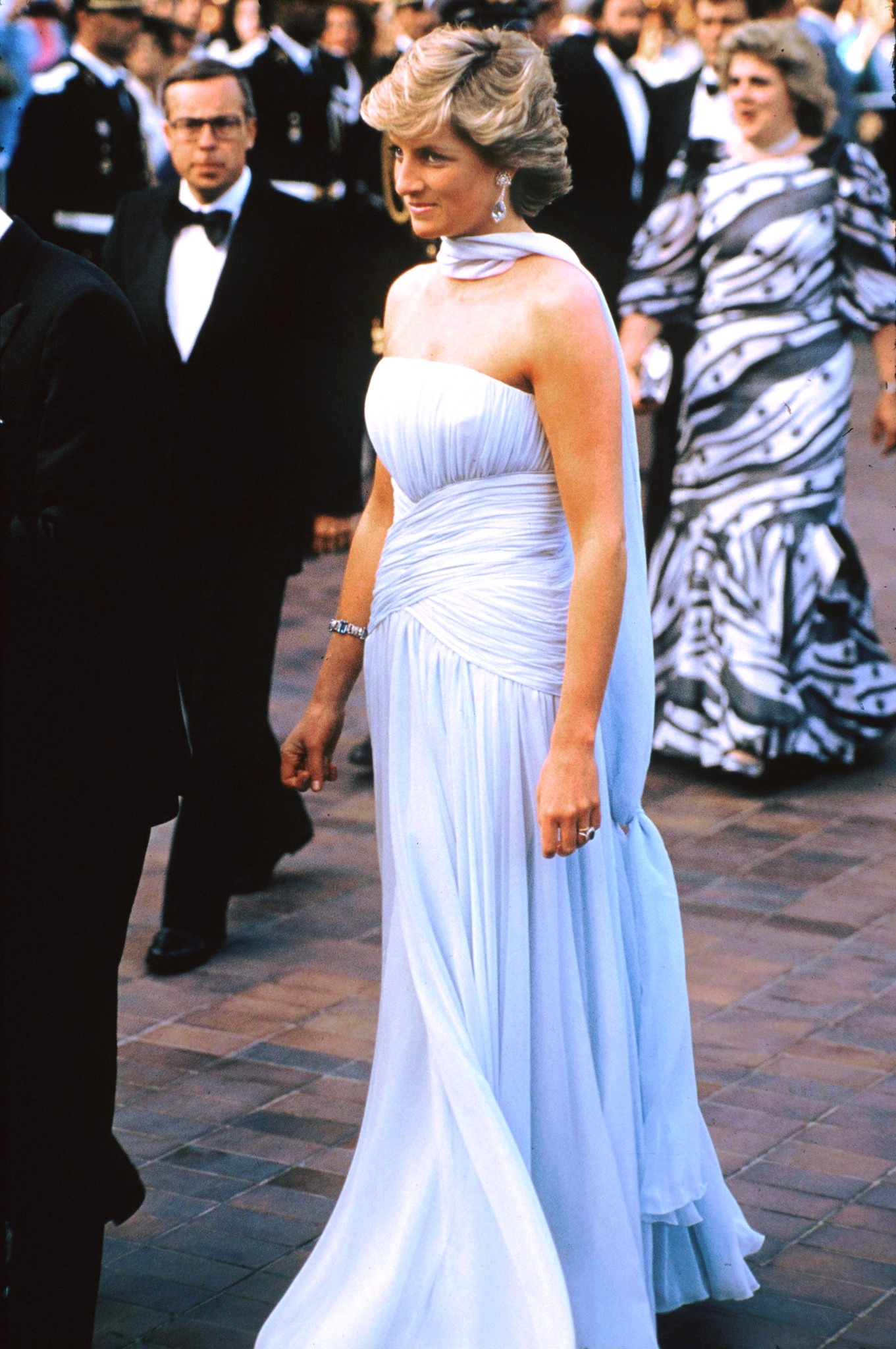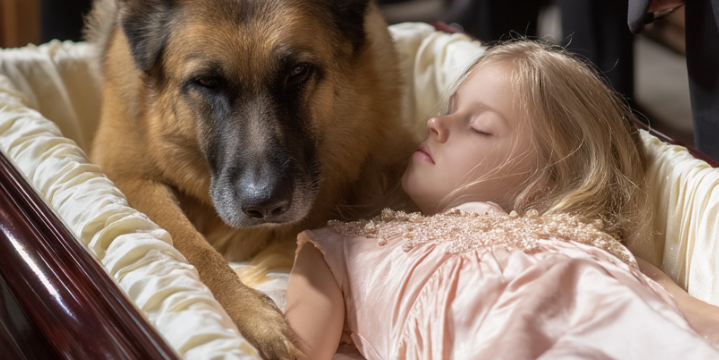When Princess Diana appeared at the 1987 Cannes Film Festival, she was the picture of grace and elegance, floating down the red carpet in a soft powder-blue chiffon gown that moved like a whisper in the Mediterranean breeze. The cameras eagerly captured her every step, enchanted by her ethereal beauty, her poise, and the effortless way she seemed to glide through the spotlight.

But beneath the surface of her glamorous appearance, that gown held a quiet, deeply personal meaning—a tribute not loudly announced, but gently wrapped in silk and memory. Diana, known to the world as the “People’s Princess,” had an extraordinary way of speaking without words. Her fashion choices were never random or superficial. Each look she wore carried intention, often conveying emotions and messages that protocol prevented her from speaking aloud. With her affinity for soft pastel colors and flowing, feminine silhouettes, she redefined what royal fashion could be—less rigid, more human, and warmly relatable. But that night in Cannes, her choice wasn’t just about elegance or trend—it was a message of remembrance. Though the official purpose of her brief appearance was to celebrate British cinema and pay tribute to Sir Alec Guinness, the real story that night was told in fabric.
The gown, designed by her close friend and longtime fashion collaborator Catherine Walker, was more than just a red-carpet showstopper. It was Diana’s way of quietly honoring Grace Kelly, the beloved Hollywood star who had become Princess Grace of Monaco, and whose life bore haunting similarities to Diana’s own. Grace had died tragically in a car accident in 1982, just five years before Diana’s Cannes appearance—an event that tragically foreshadowed Diana’s own untimely death a decade later. The two women had met only once, but that encounter left a lasting impression on Diana. It was 1981, shortly after her engagement to Prince Charles, when she met Grace at a charity event. Overwhelmed and emotionally drained from the pressures of her new royal life, Diana had retreated to a restroom in tears. Grace followed her, offered kind words, and shared her own experiences with the loneliness and expectations of royal life. That small act of compassion became a moment Diana would never forget. So when she chose that strapless, flowing pale blue gown for Cannes, she did so with purpose. The dress closely resembled the iconic Edith Head gown Grace Kelly wore in Alfred Hitchcock’s To Catch a Thief, filmed just miles from Cannes along the Riviera.
Diana’s gown was not a coincidence—it was a carefully considered homage to a woman who had offered her kindness when she needed it most. Though the press focused on Diana’s shimmering presence and breathtaking beauty, they missed the deeper significance. No one reported on the emotional undertones or recognized the tribute she was quietly making.
But Diana was communicating in a language that few understood, one composed of fabric, color, and gesture. Every element of the gown—the hue, the cut, the movement—was a soft nod to Grace’s legacy and the parallel burdens both women had carried in silence. Diana would wear the gown again in 1989 to the Miss Saigon premiere, and in 1997, just months before her death, she included it in her famous Christie’s charity auction, where she sold 79 dresses to raise money for causes close to her heart. The Cannes gown sold for more than $70,000 and was later resold for $132,000, with the proceeds benefiting children’s charities. In 2017, the dress returned to the public eye as part of a special exhibition at Kensington Palace. Today, it stands as more than just a beautiful gown—it is a powerful symbol of Diana’s ability to use fashion as a tool for empathy, reflection, and connection. It represents her quiet strength, her emotional intelligence, and her refusal to let her voice be silenced. That evening at Cannes, as she smiled for the cameras and posed for the world, few understood what she was really saying. With that soft shade of blue draped over her shoulders, she wasn’t just making a style statement—she was saying goodbye to a kindred spirit, a fellow princess who had understood her pain. Diana’s farewell wasn’t spoken—it was worn, graceful and tender, a silent message delivered with dignity and heart.





